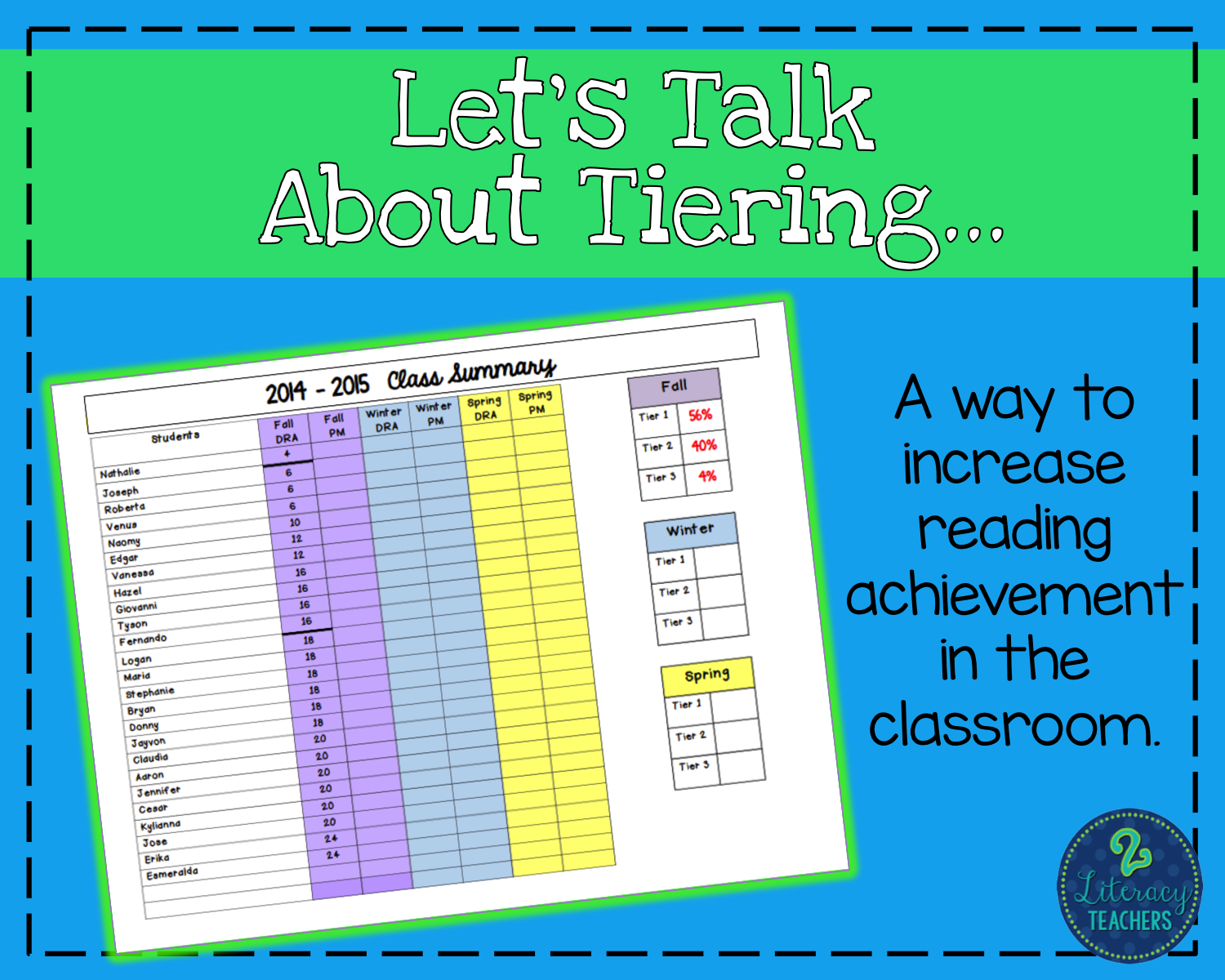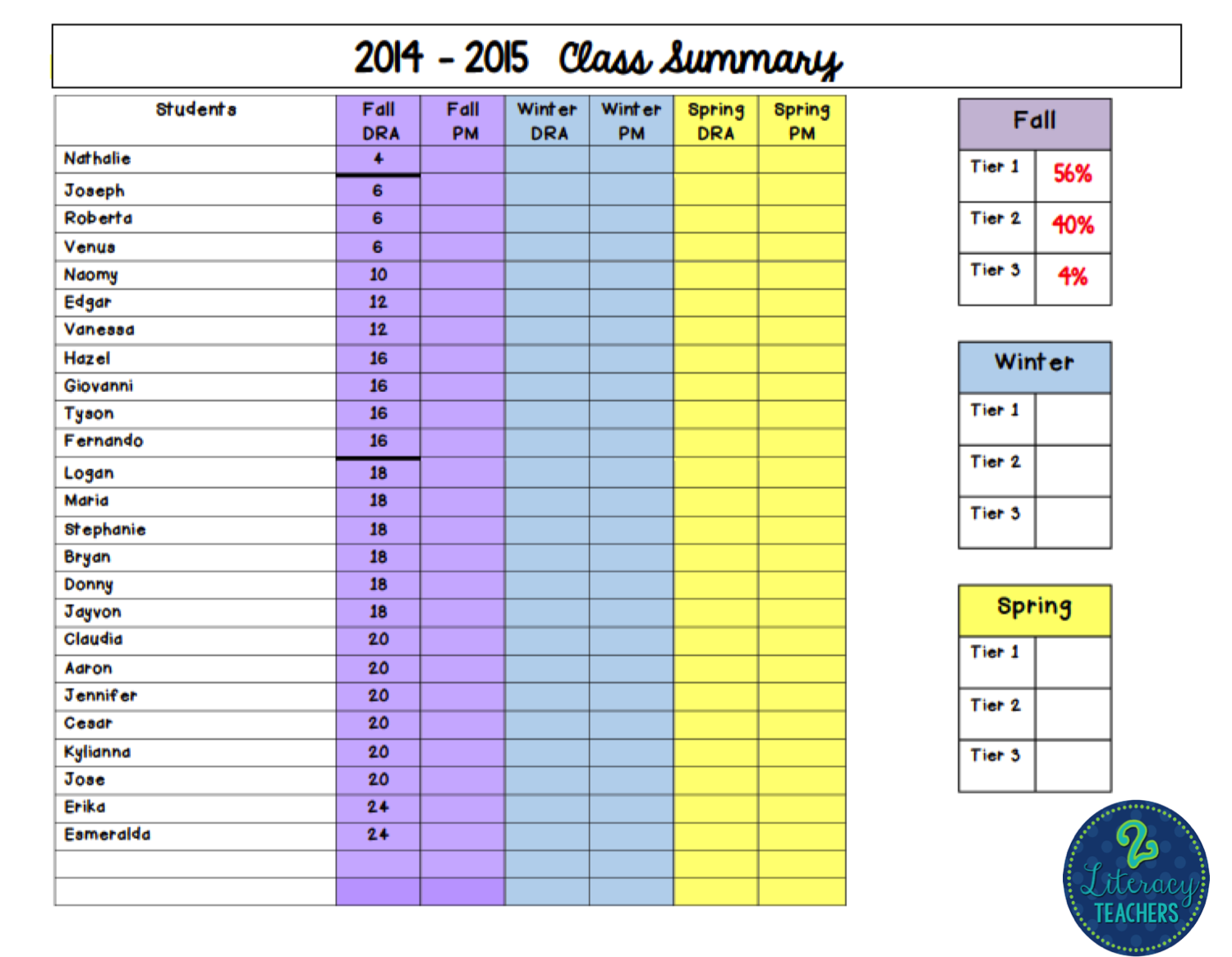What is the number one thing that we teachers are paid to do? Plan? Teach? Plan and teach? Nope, nope and nope. We are of course paid to make sure that all students are performing at grade level and that those who are above grade level, make maximum progress for their abilities. Right? Right! “Hang on!” you say….how the heck do we do that with too many students in our class, many just learning English…many from poverty….and all the other things that students today deal with? Over the next several blog posts, we will give you some ideas on just HOW to do it. Does that sound good?

Let’s start with your percentages. Do you pay attention to your percentages? If not, you should consider it. Really paying attention to your percentages is one fantastic way to raise your students’ achievement. Let me explain what I mean by percentages. You may have heard of the tiers in the RTI model. Tier 1 includes your students at or above grade level. Tier 2 are your students up to one year below grade level. Tier 3 students are those who are one or more years below grade level. Now, some models change this slightly, but basically they are similar. The goal of paying attention to your percentages is to decrease the percentage of students in tiers 2 and 3 by increasing their achievement so they move up the tiers. When you pay attention to your percentage of students in each tier and reflect on it regularly, you will be more focused on the goal of improving achievement so will be more likely to do so. You will also be able to tell if what you are doing for instruction or intervention, is actually working.
Right now, at the beginning of the year, is the time to start. Here’s how:
- Get out your list of student names and reading scores for your new class. At our school, we use the DRA scores to do this.
- Make or sort your list by score from least to greatest. Next, divide it into three sections/tiers: students with scores one or more years below grade level, students with scores up to one year below grade level, and students with scores at or above grade level.
- Figure out the percentage of your students that are in each tier or section.
- Reflect carefully about the instruction and interventions you need to provide for the students in each tier or section. Ask yourself, “What do I need to do to help these students make enough growth to move up the tiers, or for those at or above….to make maximum improvement?”
- Use your reflection ideas to plan and teach.
- Save your score/percentages paper until your next benchmark assessment. At our school this occurs every six weeks, but some schools do it at each trimester or quarter.
- When you assess again, make your score list and divide it as you did the first time.
- Figure your percentages for the sections on your new list and compare them to the first list. Did your tier 1 percentage increase? Did students move up from tier 3 and tier 2? If not, what didn’t work and what could you do differently to make sure the students, and your percentages, improve?
- Lather, rinse, repeat…as they say…for each benchmark assessment period.

If you track your percentages and regularly reflect on what is and isn’t working, I know your scores will improve. Over the years it has been my privilege to watch awesome teachers work with students, and even though all of them have been amazing…the teachers that pay attention to their percentages, always have the highest percentages of student achievement at the end of the year. So give it a try! It’s really easy to do and it works. And bonus????? If you are on an evaluation system that requires you to show student growth, this system works well for that, too!
Here’s hoping you have a wonderful new school year full of awesome reading achievement!
Smiles,
Kristin

